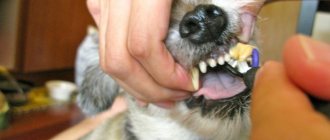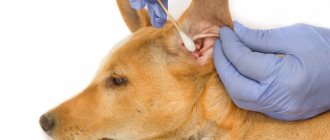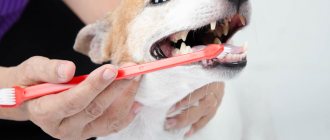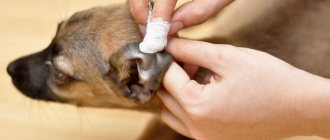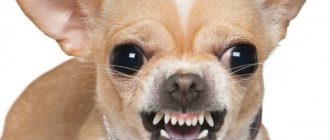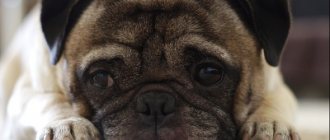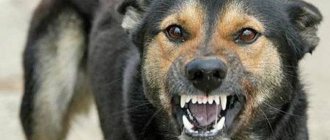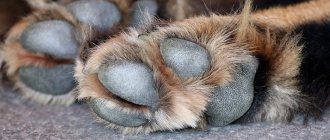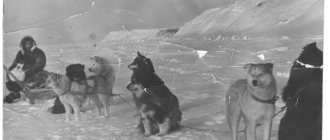Any pet requires taking care of its health. Yorkshire terriers were no exception. In addition to grooming, grooming and a balanced diet, these miniature dogs also need regular cleaning of their mouths.
Due to their anatomical features, Yorkies are prone to various dental diseases. Narrow jaws and the specific structure of the oral cavity lead to the formation of plaque, which subsequently turns into tartar. Therefore, the sooner you start accustoming your dog to hygiene measures, the better. Veterinarians recommend starting to monitor hygiene at the age of 3-4 months.
Failure to comply with hygiene rules leads to inflammatory processes in the oral cavity and, in advanced cases, to tooth loss. In addition to cleaning the mouth, owners need to remember how to care for Yorkie puppies.
Should you brush your dog's teeth?
Doctors say that 70% of dogs develop periodontal inflammation after three years of age. This is the name of the tissue to which the tooth is attached. If the disease gets worse, the crowns begin to loosen and fall out. As a result, the animal remains toothless after five years.
Another answer to why you should brush your dog’s teeth is caries. It is difficult to treat; there are no dental offices for animals in many cities. If so, the filling is expensive. Therefore, the only solution that veterinarians recommend is to pull out the tooth.
Other problems that arise if plaque is not removed:
- stench from the mouth;
- increased salivation;
- poor appetite due to jaw pain;
- diseases of the internal organs, since putrefactive bacteria enter the digestive system and damage it.
Disease Prevention
Due to their narrow mouths and closely spaced teeth, Yorkies often get stuck in food debris, which leads to plaque and odor from the mouth. Such problems can arise due to a lack of hard foods in the diet.
Preventive measures to reduce the formation of plaque and tartar in Yorkies:
- Inclusion in the diet of chewing biscuits, special rawhide seeds, crackers, and carrots.
- Adding tomato juice, which cleans plaque well. Veterinarians recommend giving your dog tomato juice or finely chopped tomatoes.
- Feeding Yorkshire Terriers with dry ready-made diets.
How can you brush your dog's teeth?
Using a human brush to remove plaque from pets is inconvenient and ineffective. It’s better to buy a special brush for dogs at a pet store. It has a design that allows you to clean out food debris from hard-to-reach places. The bristles should be soft and not cause discomfort to the pet.
The following toothbrush options are available:
- Silicone, which is put on the owner’s finger. She has soft and delicate bristles that do not injure the oral mucosa. With its help, you can not only clean the crowns, but also massage the gums.
- Double - has bristles of different lengths along the edges to remove plaque from the back and front crowns. The accessory is equipped with a long handle with which you can clean distant units. If you have a large breed, get a longer handle.
- A teeth cleaning sponge is the answer to the question of how to clean the teeth of small breed pets. The sponge allows you to carefully remove any remaining purulent food.
Is it possible to brush your pet's teeth with human toothpaste?
Dogs should not remove plaque with human paste. Moreover, it is forbidden to use soda or salt. They are toxic to your pet.
What toothpaste should I use to brush my dog's teeth? There are products on sale that are designed specifically for animals. You can get them at a veterinary pharmacy by looking through the catalog of pet supplies. Gel for cleaning teeth for dogs is not only safe, it smells pleasant, which makes the procedure easier.
Other means
If you don’t have time to regularly remove plaque, there are products on sale that will help you:
- Toys and bones for cleaning dog teeth have a special design, thanks to which the crowns are cleaned mechanically when the pet chews a treat. They may also contain substances that dissolve plaque.
- Wipes for cleaning dogs' teeth - reduce the likelihood of tartar formation, relieve inflammation, kill germs, and have a wound-healing effect.
- Spray for cleaning teeth in dogs - kills bacteria, relieves inflammation.
These devices can remove plaque, but cannot fully replace a toothbrush. Therefore, do a full procedure at least once a week.
When purchasing dog hygiene products, check the ingredients. If the wipes or teeth cleaning food are of poor quality, your pet may be poisoned. Pay special attention to the choice of teeth cleaning toy. It should be made of strong material and large so that the dog does not swallow it.
Causes of tartar in dogs
Tartar is a very common disease in domestic dogs. It not only causes pain and inconvenience to the animal, but can lead to the death of the pet.
- Poor nutrition can contribute to rapid tooth decay. Eating only soft food, the dog stops using its teeth the way nature intended.
- The absence of solid food in the diet allows bacteria to run wild at the base of the teeth. Bacteria that feed on the dog's food, which remains on the teeth, leave plaque from their secretions. Plaque is dangerous because it consists of mineralized food residues and salts.
- Irregular teeth structure provides favorable conditions for bacteria to live. Closely spaced, misaligned or crooked teeth are difficult to clean even when the dog eats solid food. Hard-to-reach corners become the site of the highest concentration of bacteria and the development of tartar.
- Increased acidity of saliva is one of the likely reasons that provoke the appearance of growths.
- Lack of concern for hygiene . Brushing your teeth is a mandatory rule of hygiene. Refusal of this ritual leads to oral diseases.
- A sedentary lifestyle leads to impaired water-salt metabolism. Such violations have a bad effect on the condition of the entire body and teeth in particular.
Lack of dental care is one of the reasons for the formation of tartar
How to teach a dog to brush its teeth
Ideally, the puppy should be accustomed to the procedure between 8 and 16 weeks of age. He will quickly get used to it and begin to perceive it as a normal procedure. If you have an adult dog, you need to change your approach:
- Don't scold your pet. Do not force it under any circumstances: do not hit or yell at your pet if it does not want to brush its teeth. If he gets really scared, try again later. Get used to removing plaque gradually.
- Accustom your pet to contact of the brush with the teeth and gums. To prevent your dog from getting nervous during the procedure, accustom him to manipulations in his mouth. Periodically run your finger over your dog's upper teeth and gums, applying gentle pressure. Several such sessions may be needed before you can proceed further.
- Introduce your dog to dog toothpaste. Apply the product to the tip of your finger and let your dog lick it off to get used to the taste and texture. The pasta smells delicious, so there shouldn't be any problems. If you don't like it, try a different scented dog teeth cleaner. Sooner or later you will find a paste that will satisfy your pet's picky taste.
What a dog owner should remember
If you want your “tailed friend” to always be cheerful and cheerful, you should not neglect the recommendations of veterinarians. Compliance with hygiene rules, a healthy diet, timely preventive examinations - all this will help keep your dog's teeth and gums in excellent condition. Remember that neglect of the oral cavity can lead to serious health problems: indigestion, intoxication, kidney failure. The health of your pet depends only on you!
How to properly brush your dog's teeth
Before you begin the procedure, gather your tools. The dog's teeth should be brushed when he is calm and relaxed (for example, resting after active play). When brushing your dog's teeth at home, praise and stroke his head.
Step 1: Find a comfortable position
The pet should be in a position that is comfortable for itself. Don't stand directly above him or take a threatening position. The dog will become wary, and the procedure will turn into hard labor. It is better to sit on the side of the dog, and if he is lying on the floor, kneel next to him.
Step 2. Start the procedure
How to brush your dog's teeth:
- lift your upper lip;
- Squeeze toothpaste onto the brush to clean your dog's teeth;
- bring the brush and tilt it so that the bristles reach the gum line;
- Position the tool at a 45° angle so that the bristles massage the gum line and remove plaque.
Step 3: Move the brush correctly
Hygienic brushing of teeth in dogs should begin with the distant crowns. Move the brush in small circular motions:
- top down;
- on the inside and outside of the crown;
- near the gum where the stone is located.
If there is slight bleeding, do not be alarmed. If it is strong and repeated constantly, you may be massaging your gums too aggressively. If the movements are slight and there is blood, contact your veterinarian. Your pet may have sore gums.
Step 4: Pay Attention to Plaque
If you don't completely clean the plaque, especially around the gums, it will turn into tartar. To prevent this from happening, during one procedure the crowns must be processed several times for at least 2 minutes. When brushing your dog's teeth at home, be sure to reach around the canines and upper back molars, where tartar likes to form.
Step 5. Reward the dog
The pet will happily endure the procedure if there is a reward at the end - a favorite treat.
Cleaning a dog's teeth in a veterinary clinic
Veterinarians recommend brushing your dog's teeth at the clinic at least once a year, even if you monitor your pet's hygiene daily. During the procedure, the doctor will assess the general condition of the oral cavity.
Cleaning stones on dogs' teeth can only be done by a professional. No stone removal products at home will cope with this task. They can only be used to prevent its occurrence.
If your pet has gum problems or develops periodontal disease, the doctor will prescribe medication. In case of caries, the doctor will offer two options - remove or put a filling. The second option is not affordable for everyone, and is not available in all clinics.
If you have neglected your teeth, haven't brushed them, and tartar has formed, take your dog to the vet. He can remove the stone using standard instruments, without anesthesia. If the dog is afraid of the doctor and breaks out, it is impossible to do without anesthesia.
Advanced clinics offer to rid crowns of plaque and stone using ultrasound. The procedure is expensive, but does not damage the enamel as much as conventional instruments. Hardware teeth cleaning for dogs lasts about an hour. The pet is often under anesthesia, as it can react nervously to the buzzing of the device and splashing of water.
Anesthesia
Not every pet will be sympathetic to cleaning, especially if you take it to the clinic and a stranger will be in its mouth. In this case, anesthesia is needed. Before giving anesthesia, the dog needs to have tests done to determine how he will tolerate it. This is an important point if you have an older pet. The wrong dose can kill him.
Yorkshire Terrier coat care
The first thing people pay attention to when assessing the grooming of a Yorkshire Terrier is the condition of the coat. Agree, a dirty dog with matted hair and an unpleasant odor is not something to be proud of. But how then can you make your hair sparkle and please your eyes? You will need comprehensive care: bathing, haircut, use of care products, proper nutrition.
IMPORTANT! You need to bathe your Yorkie approximately twice a month or when dirty, but not more than once every 10 days. Bathing too frequently strips your pet's skin and fur of its natural protective lubricants. The coat can become dull and brittle, and delicate skin can dry out and begin to peel.
To bathe an adult animal, it is better to use a bathtub rather than a basin, as the dog may knock it over. Place a rubber mat in the bathtub so that your pet's paws do not slip and he feels more confident. Wash your dog in warm water, for example, at a temperature of 36-38°C.
Try not to use concentrated shampoo; it is better to dilute the amount of special product you need in a small volume of water. Then gently lather the resulting shampoo and apply it in the direction of hair growth, rubbing it in. If possible, bathing time should not exceed 10 minutes. Your pet may freeze. After washing the coat, use a conditioner to make combing easier. You can add a drop of oil to the balm to make the coat shiny and smooth. Use oils: coconut, grape seed, jojoba, wheat germ oil.
IMPORTANT! The best time to bathe your dog is in the evening before bed. If you need to wash your pet during the day, do it at least 2 hours before your walk.
After bathing, wrap your Yorkie in a warm fluffy towel. You can wipe the animal only with wet movements, so as not to tangle the fur even more. Gently untangle your pet's fur, first with your hands and then with special brushes. Then blow dry without leaving the hair wet, otherwise the dog may get a cold and get some kind of inflammation.
IMPORTANT! Be sure to remove all moisture from your ears separately. Use cotton swabs or paper napkins.
The dog must be combed every day, brushing it along the damp coat, in the direction of hair growth.
There is another important aspect in caring for a dog - this is the so-called hygienic haircut. It is based on cutting the hair around the eyes, on the pads of the paws and around the anus, and in males also the area on the abdomen. This is necessary for the convenience of both the dog and the owner: uncut hair catches the Yorkie’s waste products. This procedure requires special skill and experience, so it is preferable to do it in salons.
Useful tips
- Proper nutrition has a good effect on crowns, making them stronger and more resistant to rotting. Give the dog high-quality food, muscles, large cartilages. If your pet's crowns are loose, it is better not to give dogs a hard bone to clean their teeth.
- To clean, use a brush specially designed for pets.
- Never use human toothpaste, only buy product intended for dogs.
- Before the procedure, give your pet a sample of the toothpaste to try. The tasty smell will make him more accommodating.
- Encourage your dog with games, petting, and favorite activities to make him more accommodating and improve the cleaning process.
- If you are unable to remove plaque, purchase a dog treat or dental cleaning ball.
- When your pet quickly chews the teething stick, buy her a larger toy.
- If the animal has bad teeth, do not give hard toys.
